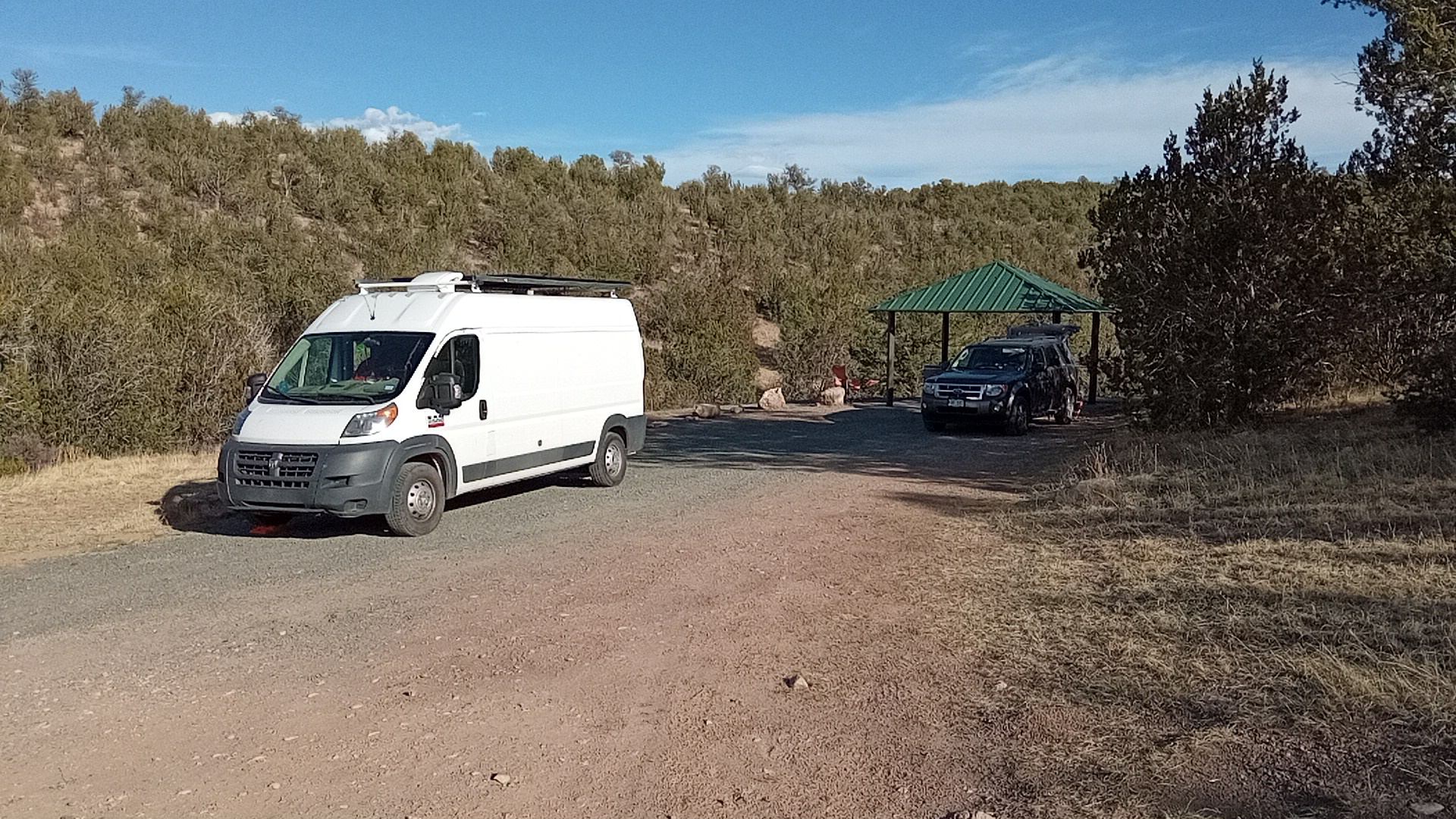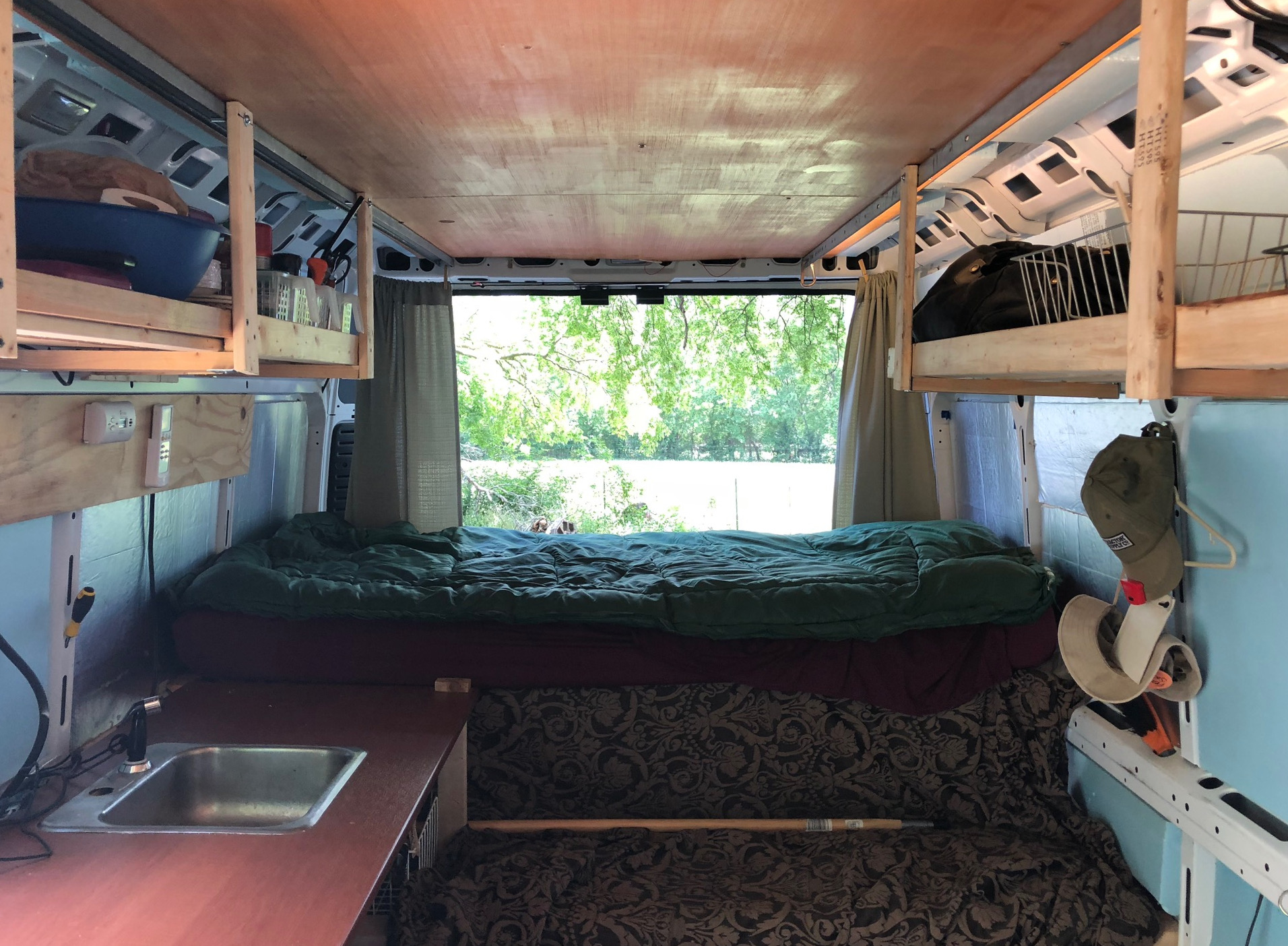My camper is a 2017 RAM Promaster 159” cargo van (notes on how I made this choice). It has served me very well indeed.
exterior
This pic shows the basic exterior layout:

- Maxxfan
- solar array mounted on rack and square-tube steel post material
philosophy / intended use
The camper is my retirement vehicle (figuratively and literally). Retiring early requires a tight budget, which in turn requires moving minimally, cooking for myself, and not paying for campgrounds.
The answer at the center of that budgetary Venn diagram is boondocking (dispersed camping). I generally stay on BLM/USFS land for 14d then relocate and reprovision (food, water, laundry, and packages) at some point along the relocation route. This simple life makes it possible to live on $500 $6001 per month .
power
There are several sources of charging in the campervan:
- main solar array mounted on roof, 750w. (3x 250w Trina poly panels, 45A MPPT controller). On average the setup makes/uses 1.76kWh/day, with a max observed of 4.59kWh, and the panels were covered in snow part of that day!
- alternator, via voltage sensing relay (Battery Doctor 75A isolator).
- portable solar array, 200w on 15A MPPT. Stored 95% of the time, deployed when conditions necessitate, as when camping in a forest canopy. details
- DIY converter (10A 24v power supply -> the portables’ MPPT), . I used the converter extensively during the build before panels were mounted but it has been used only once since then.
Power is stored in a SFK-275SE LiFePO4 battery (overview) Update: I paralleled in an extra 100Ah that was going unused. The bank provides a little over 2 days of autonomy of normal “do what I want” use, or nearly 5 days in power conservation mode.2
interior
This pic from the build shows the basic interior layout (looking back from cab):

- Water and galley on the passenger side
- sleeping platform and “basement” storage in the back
- easier-access storage (food, clothing, etc), solar components and battery bank on the driver side
- light and frequent-access gear in crude shelving along the sides
water and plumbing
- main fresh tank is a pulled 35gal tank from a parted-out RV
- I also carry 2x 7gal Aquatainer cubes and fill when extra is needed.
- drinking water is filtered through a Brita
- 13” sink drains into catch container – rarely used. Sink faucets replaced with a dish sprayer with 6ft hose. Long enough to reach out the side door for showers or outdoor rinsing of dirty stuff
- shurflo water pump
- 3x Homer buckets for water catchment / harvesting from running sources. One of them has a spigot installed to make decanting, dish-washing, and outdoor showers easier.
With a full water load I can boondock for 30 days. Filling water from a threaded spigot (via 50ft potable hose)3 Filling from a spigot turns water loading from a lengthy chore: hook up, blast water, get out.
materials
[see the semi-complete parts list]
I bought most of the physical stuff off Amazon, but some came from eBay etc when it was cheaper that way.
-
since 2024 inflation has pushed this number up to $550-$600, mainly due to food costs. ↩
-
cooking with propane rather than electricity, turning off lights when not in use, suspending laptop when not in use, etc. In actual use it’s more of a spectrum. If I notice the bank is losing ground, SoC-wise, day after day I start to ease up on elective power consumption. ↩
-
the added length can mean the difference between reaching a spigot or not. ↩